Objects are the keys to the Viking world. A range of objects from the Oseberg ship, to the sword from Langeid to small pearls from Kaupang all testify to a bygone era. Together, they evoke an image of a society that underwent major changes.

The magnificent sword from Langeid.
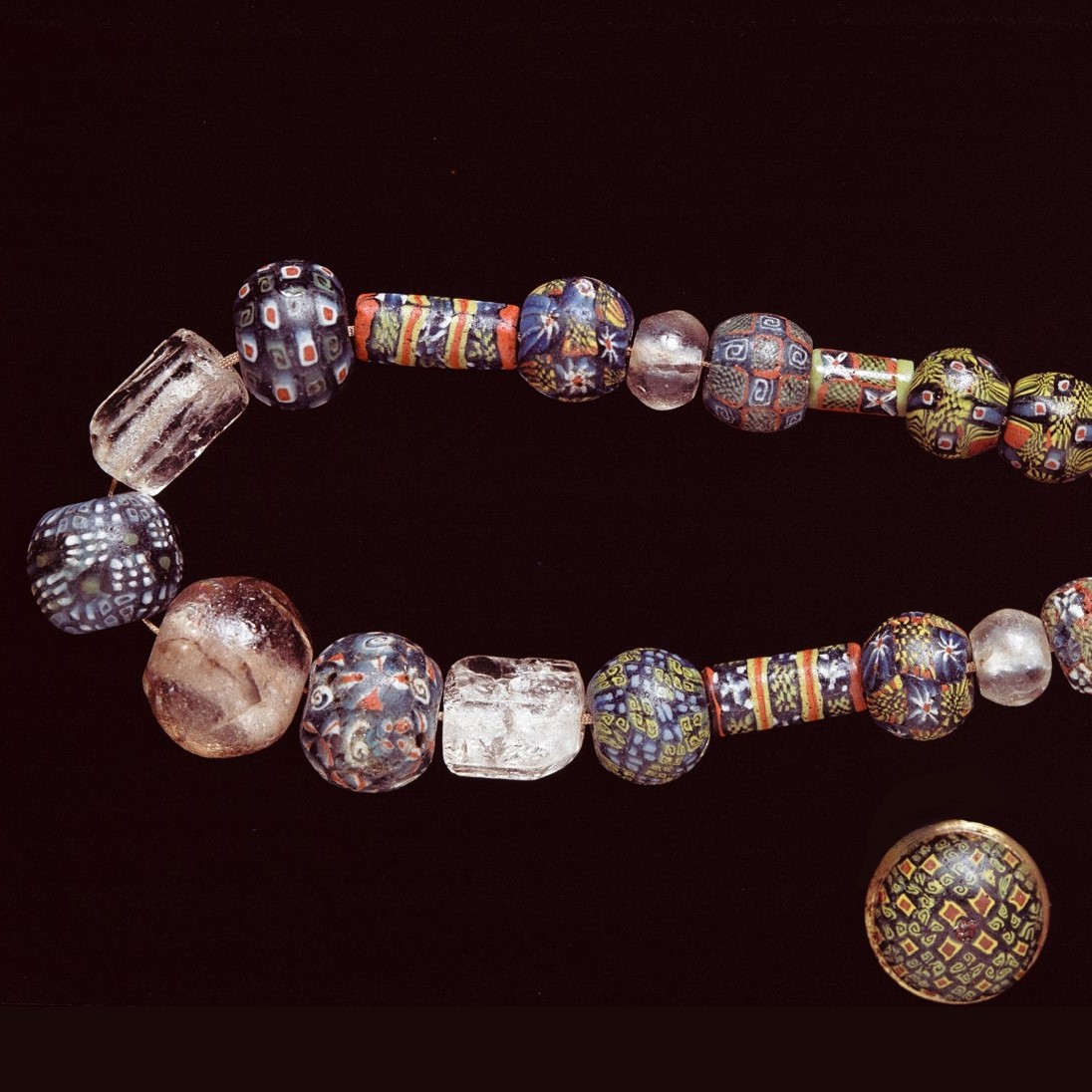
Glass beads were the most common jewelry in the Viking Age.
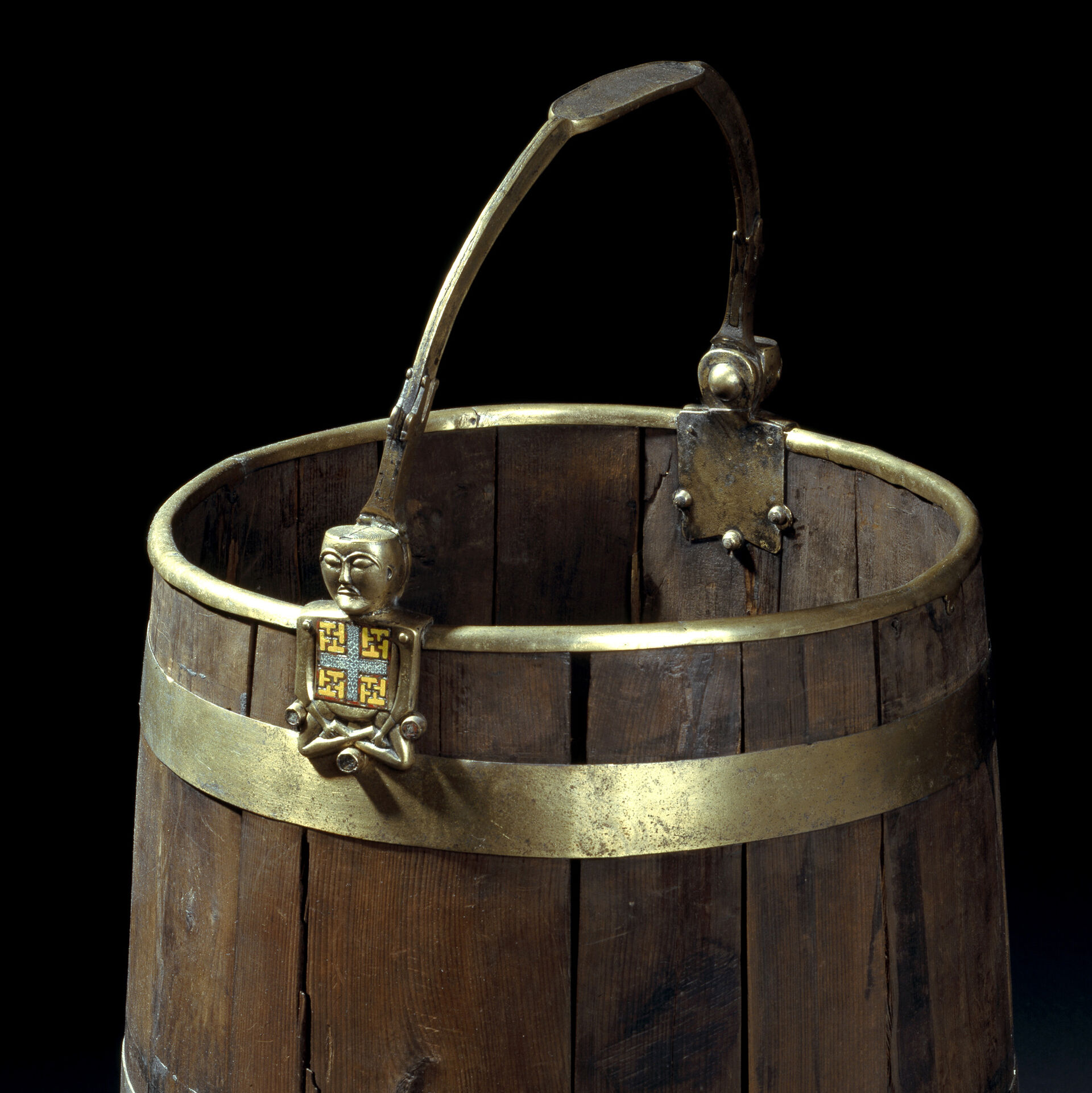
The so-called "Buddha bucket" from the Oseberg discovery.
Decades of interdisciplinary research have painted a pretty clear picture of the Viking Age, but there is still so much we do not know. Therefore, we must take care of the objects from the Viking Age, as they are such an important part of the cultural heritage, and because generations after us will have other questions that the objects can illuminate.
The Museum of the Viking Age will be the world's leading museum about the Viking Age. The Viking Age fascinates us to no end. We have rich and varied archaeological finds from the period. And the saga writers describe an intense period filled with beautiful (and violent) stories. At the Viking Ship Museum, we displayed ships and objects from four ship graves. The new Museum will provide a more complete picture of the entire Viking Age. In our storage facilities, the museum has over 50,000 objects from the Viking Age. The public will get to experience the Viking ships in a new environment, but also the entire breadth and depth of the world's finest collection of antiquities from the Viking Age, processed and arranged by the leading Viking Age researchers.
Oseberg
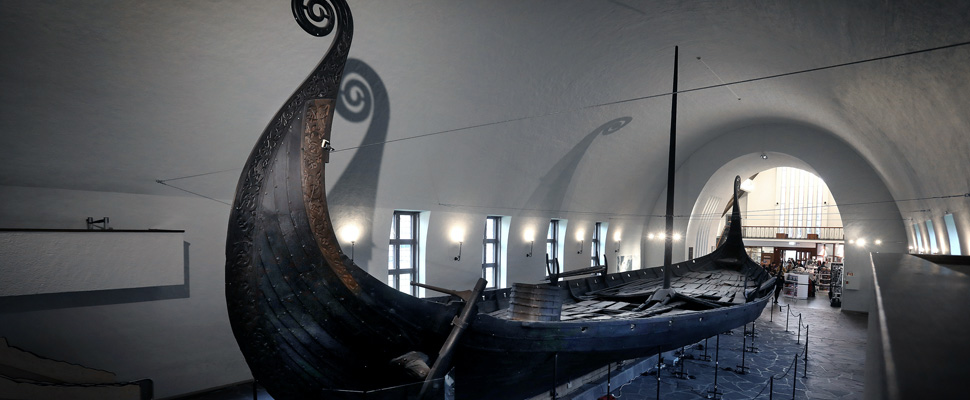
The Oseberg ship was built around the year 820 CE and is made of oak. The ship is richly decorated with carved animal ornaments that wind up along the bow and end up in a spiraling serpent’s head. Such an ornately decorated ship has been reserved for special members of the aristocracy. Each of the strakes overlaps the one below and they are fixed with iron rivets. The side of the ship consists of 12 strakes. Below the waterline, they are only 2‒ 3 cm thick, while the two upper strakes are a little thicker. The deck is made of loose pine planks. The mast is also pine and was between 10 and 13 meters high. The Oseberg ship could be both sailed and rowed. There are 15 oar holes on each side so the ship would need 30 oarsmen to be fully manned. The oars are made of pine, and some of them show traces of painted decorations.
Gokstad

The Gokstad ship was built around the year 890 CE. It is a flexible and fast ship well suited for sailing on the high seas. The Gokstad ship could be both sailed and rowed, there are holes for 16 oars along each ship's side that provide space for 32 rowers. There are no sign of thwarts, presumably the rudders have been sitting on chests, which could also contain personal equipment. The Gokstad ship is made of oak and is 5.18 m wide and 23.22 m long. It is clinker built with 16 rows of strakes. The nine strakes below the waterline are only two to three centimeters thick, making the sides of the ship light and flexible. The keel is made of one straight piece of oak. The deck consists of planks of pine that can be lifted up so that the crew could easily bail out water if necessary.
Tune
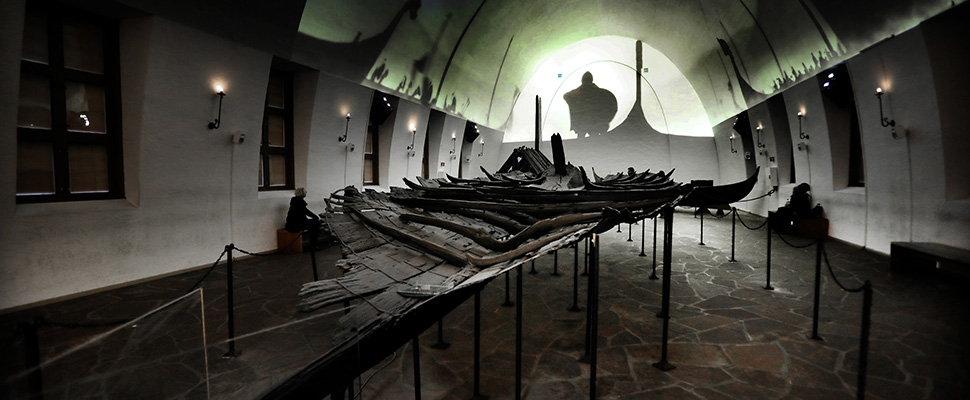
The Tune ship was built around 910 AD and is a clinker-built ship made of oak. The ship is estimated to have been 18.7 m. long, 4.2 m. wide and to have had 12 rows of strakes. In the ship’s present state we can only see the 10 lower strakes, but there are holes and marks for fastening the upper two rows. The two extra strakes would have given a sufficiently high freeboard to prevent fairly big waves from swamping the ship. The Tune ship has a strong mast support, which would have made it possible for the sail to be as large as 100 square meters. Combined with the shape of the hull, this made the ship a fast, sea-going vessel with excellent sailing properties.The ship was also well suited to moving people quickly, an important quality for a warship. Perhaps this was the Tune ship’s main function
The animal head posts
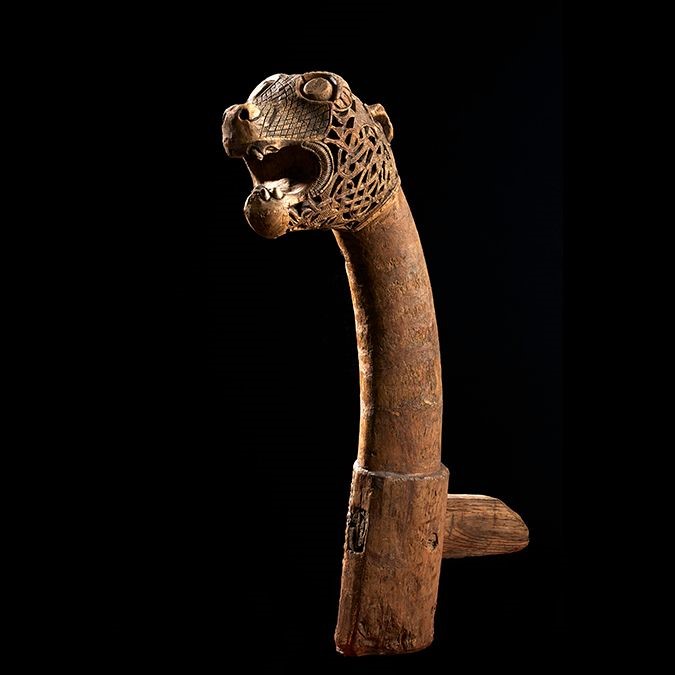
Five beautifully carved animal heads were found in the Oseberg grave, four were found inside the burial chamber itself, while one was found on the fore ship. The four found in the burial chamber were connected by a rope that went through the mouths of the heads like a log.
At the bottom of the neck there has been a shaft that was about half a meter long. With it, the heads could be carried, but they may also have been attached to walls, for example by a high seat. Even for an experienced wood carver, it has been challenging to make the animal heads. It seems that they are made of different wood carvers. None of the animal heads are alike, and two of them are also decorated with silver nails.
The unique Gold spur
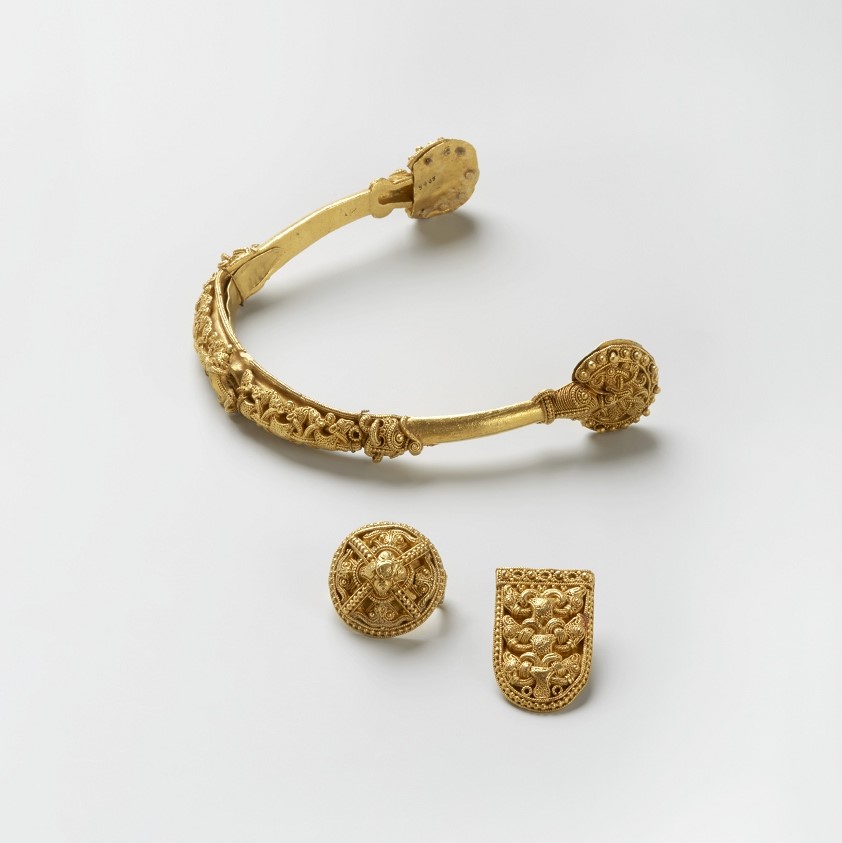
This gold spur was found in 1887 at Rød farm in Rygge during plowing work, together with an accompanying gold fitting. Thirty years later, the second fitting was found in the same field. No trace of a grave was found, so the gold objects have ended up in the soil in a different way. Spurs attach to the boots and are used to control the horse during riding. They are worn in pairs, but the second spur was never found.
The gold spur is the only one of its kind from Viking-era Scandinavia. Covered in intricate patterns in gold, pearl thread, and soldered gold grains, it depicts animals and patterns in the Viking age Borre style. A Scandinavian jeweler probably made it in the second half of the 900's. One theory is that the spur was made in a Danish royal workshop.
Gjermundbu helmet
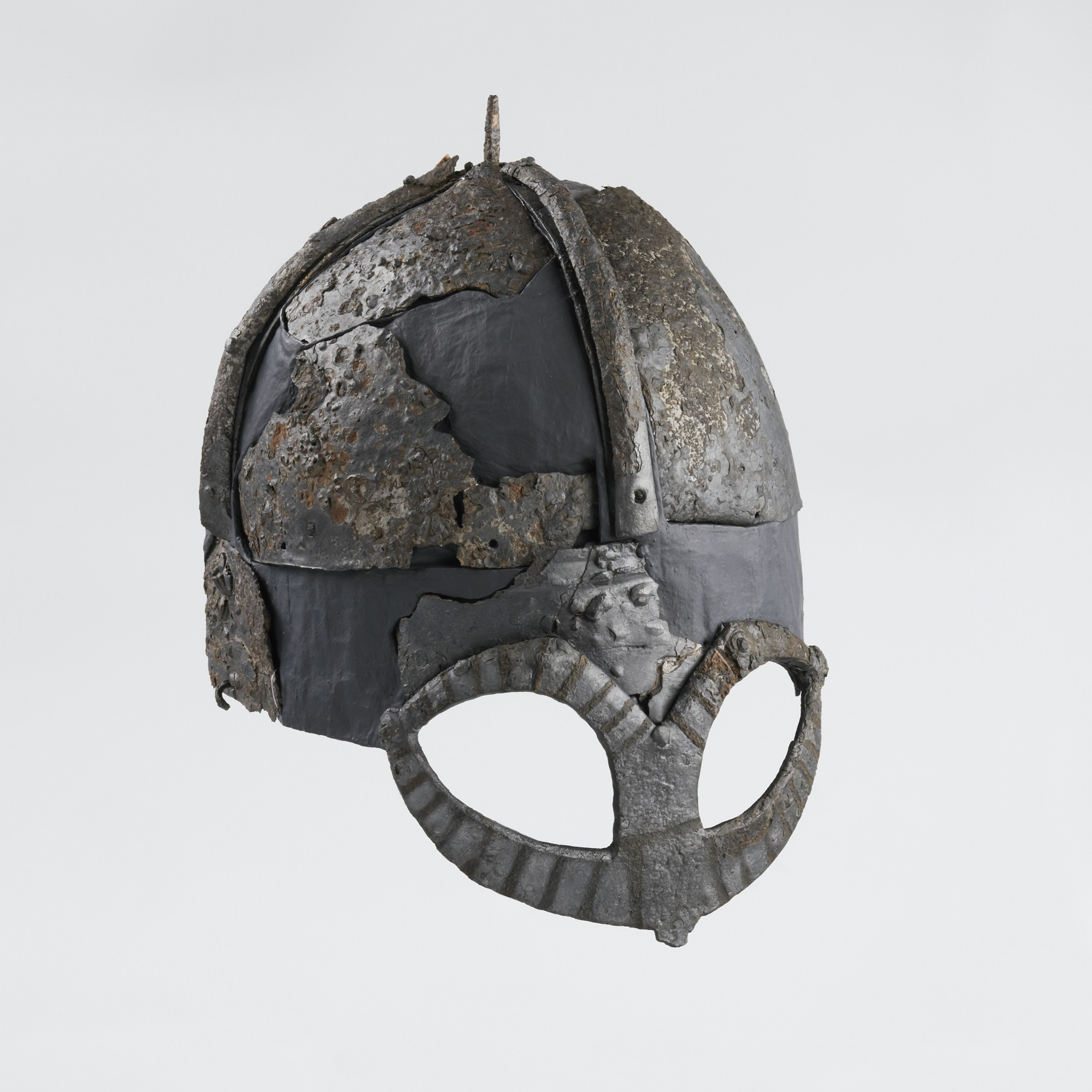
The Gjermundbu helmet was found during the excavation of a burial mound at Ringerike in 1943. The excavation showed that this was the last resting place of a powerful man who died sometime between 950 and 975.
He was buried with full equestrian equipment, one sword, two spears, two axes , chain mail, kitchen utensils, game pieces. The helmet from Gjermundbu is the inspiration of almost all reconstructions used in re-enactments, films, games and so on. The helmet is quite famous. Horns have never been attached to the helmet.
3D-scanning

The objects from the Viking Age are a unique part of the cultural heritage and it is therefore important to take care of them for future generations. One step along the way is to document the object digitally using 3D scanning which functions as digital security for the object, and the information the object offers. The 3D models make it possible to examine the object without handling them. It protects fragile objects, but equally important, the objects become available to more people.
Conservation
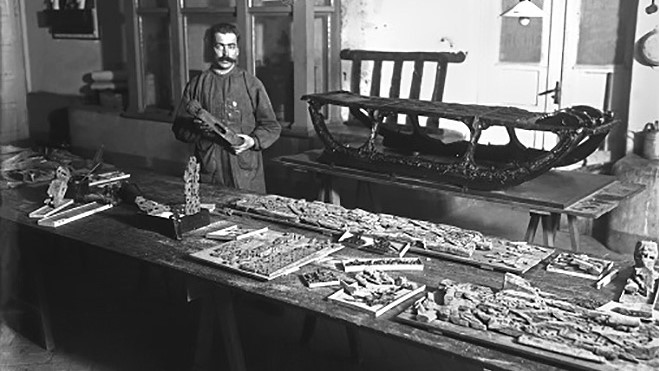
There were serious problems involved in restoring the wooden objects from Oseberg. Many individual objects consisted of hundreds of broken pieces. Each piece had to be carefully conserved so that the object could be reconstructed as authentically as possible. Some of the sleds took over a year to conserve and restore. At that time, the most advanced method of treating wood, involved boiling the pieces in a concentrated solution of alum. Unfortunately, due to this treatment many of the objects are now extremely fragile,